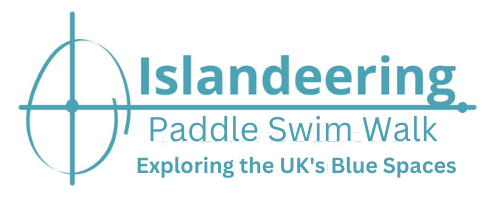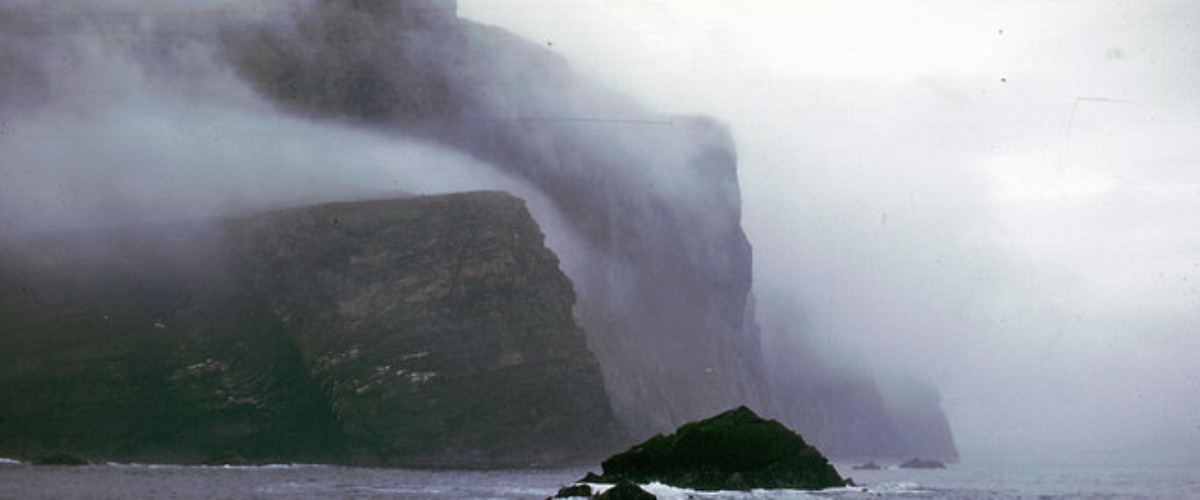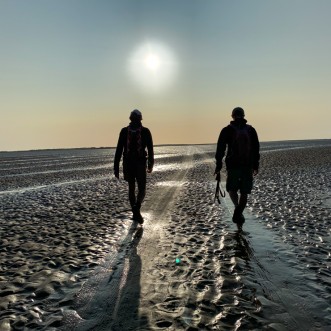Day 8 of our virtual island bagging journey
Today’s journey: high points of the islands of West Shetland
Today’s step-up height achieved: 1272 metres
It was hard to leave the comfort of the Scalloway Hotel but with 41,561 metres of high points to still bag around the islands of the British Isles we hauled ourselves out into the bright sunshine after an enormous kipper breakfast.
First up Hildasay (32m), an ex-quarry island said to be shaped like a yeti’s footprint by Haswell-Smith – if you look on the OS Map it does seem to have two ‘toes’ with the biggest one formed by Linga (28m). We used Hildasay as a jumping off point to kayak out to and bag Linga (22m), Langa (38m), Hoy (51m) and Flotta (12m). ‘Wait, didn’t we do Flotta in Orkney’ shouted Charlie. ‘See that’s the thing with Scottish islands’ I returned, ‘many share the same name. Wait ‘till we try an Oronsay’!
Then from the small harbour of Walls we paddled along Vaila Sound to bag Vaila (91m) the island that boasts the largest house of its kind in Shetland. Vaila Hall is a late 17th century castellated mansion and tower that has been completely renovated after it was nearly lost in 2009. A chimney fire took hold and the fire brigade scrambled from Lerwick but couldn’t land at the island’s pier due to a storm. They diverted to a distant pier where a trailer and tractor were waiting to transport their fire-fighting equipment to the house. Once again our Services save the day.
Back to Walls for the ferry to Foula with its five dramatic peaks, Da Sneug (418m) being the largest. Here we visited Shetland’s biggest and most spectacular cliffs on the west coast of the island, including the breath-taking 366m sheer drop of the Kame, Britain’s second-highest sea cliff. Foula’s wildflowers were spectacular, a vibrant splash of Sea Pinks, blue Spring Squill and yellow Tormentil carpeted the shoreline while Marsh Marigolds and wild orchids sprinkled gold and purple in ditches and marshes, and white tufted Bog Cotton, Sphagnum Moss, Sundew and Crowberry enlivened the moorland. We had to battle our way though the world’s largest colony of Great Skuas (bonxies) and Derek used his walking pole above his head to stop our avian aggressors from using our hats and hair as their nesting materials.
The Foula community has a strong Norse tradition of folklore and special festivities and celebrate Christmas and New Year according to the feast days of the old Julian calendar – Yule on 6th January and Newerday on the 13th. Just thought that was an interesting aside in this account of our fantasy journey.
After a quick flight back to Tingwall we still had a few more islands to bag. Papa Stour (87m) with its incredible coastline adorned with rock arches, stacks and skerries. Its impressive sea caves (some of the longest in Britain) and reefs that are home to an amazing array of marine beasties of national importance. We put on our snorkels and jumped into the crystal waters around Kirstan Hol to explore the labyrinth of magnificent caves with its riot of submarine life carpetting the cavern walls. Derek stuck his finger into a purple sea urchin – he had always wanted to know if it would hurt.
After a quick diversion to bag the Isle of West Burraforth (45m), Vementry (90m) with its first world war guns, Papa Little (82m) and Linga (69) we reached Muckle Roe our last island of the day. Known as the big red island on account of it being made of red granite we bagged Mid Ward hill (169m) and returned along the amazing sea cliffs of the Hams. It was a glorious overnighter on this island at the fabulous Muckle Roe Chapel with a take-out from the Busta House Hotel of ‘Blydoit’ Haddock Deep-fried in a Lerwick Brewery Batter and chips and their most excellent sticky toffee pudding.
Cumulative total of island bagging height – Cumulative total of 6277m (target total = 47,838 metres)
Method of travel – climbing a ladder up the apple tree in the garden; step ups on a Belfast sink; indoor staircase


